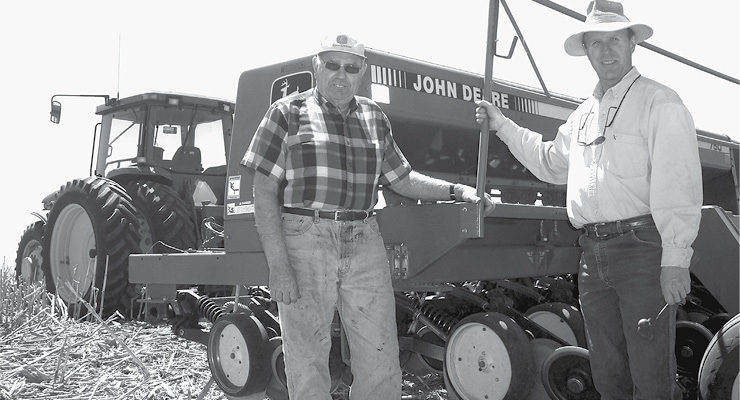No-Till Farmer
Get full access NOW to the most comprehensive, powerful and easy-to-use online resource for no-tillage practices. Just one good idea will pay for your subscription hundreds of times over.

NAME: Tom Muller
LOCATION: Windom, Minn. (farms with father Dave and brother Steve)
YEARS OF NO-TILLING: 21
ACRES NO-TILLED: 2,800 No-Tilled Crops: Corn, Soybeans, Wheat
When we decided that we wanted to no-till corn back in 1994, we knew we would face a tough challenge from our cold, wet spring soils. So, my brother Steve and I (with the support of our Dad, Dave) decided to try fall strip-tilling.
Since there were no turnkey strip-till machines available in the size that we wanted, we built our own. The modified anhydrous applicator, assembled with the help of local machine-shop welders, was probably the first 12-row, strip-till rig in our area of southwestern Minnesota.
At that time, we were already convinced of the value of no-tilling, based on 6 years of planting soybeans (starting in 1988) with 750 John Deere no-till drills. We knew the effect that crop residue could have in preventing runoff and wind erosion. We could see our topsoil was getting mellower and more absorbent with no-till. We liked the time and money savings from fewer trips across the field.
Still, we didn’t yet have a true “no-till system,” since we were still running a field cultivator in the spring before planting corn.
Because part of our land is classified as highly erodible (HEL), we were required by the Farm Bill to leave at least 30% residue on the surface of the HEL acres to qualify for government payments. This put us in a bit of…